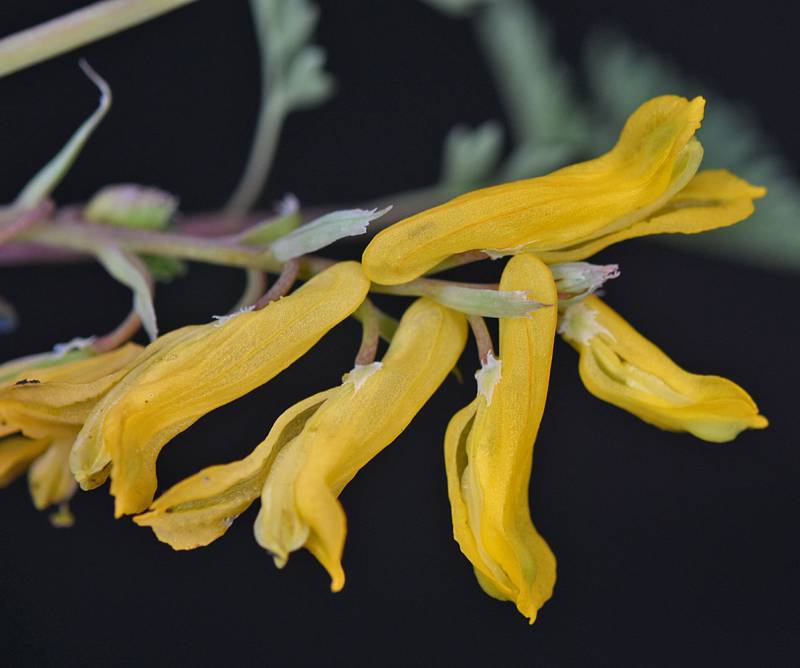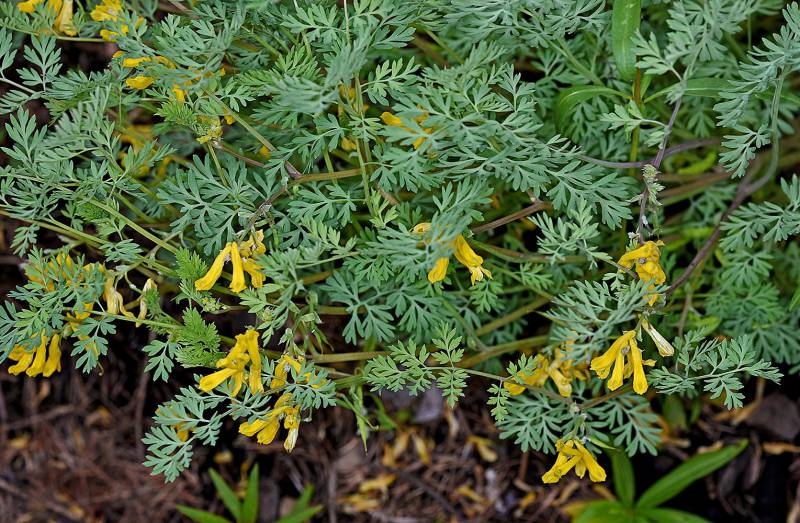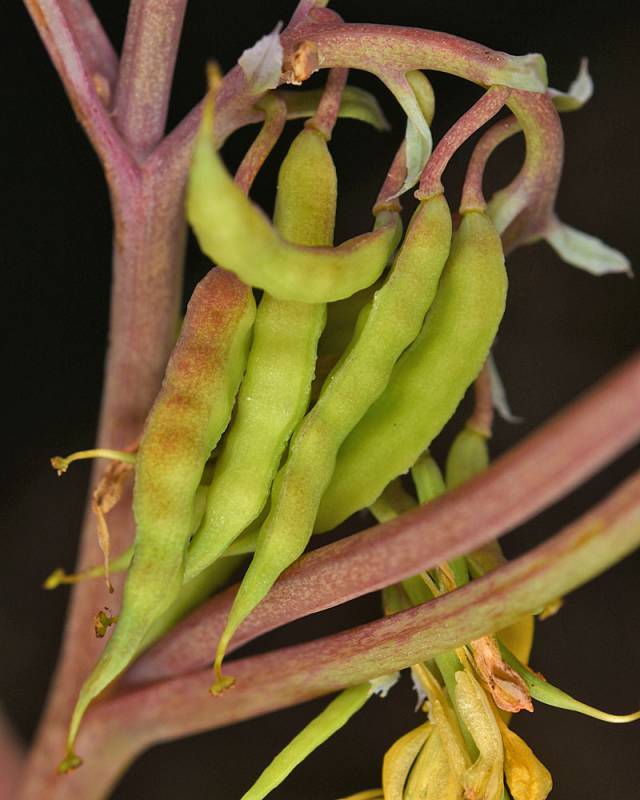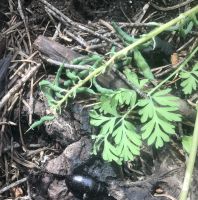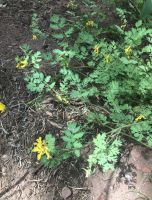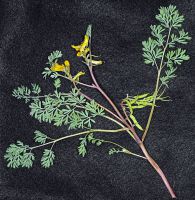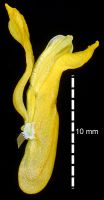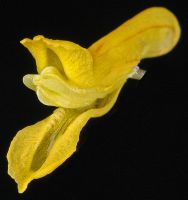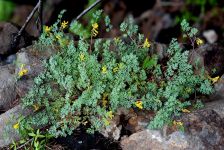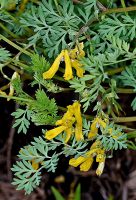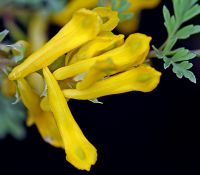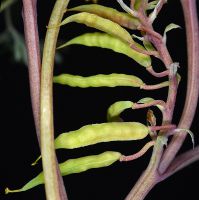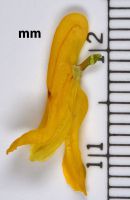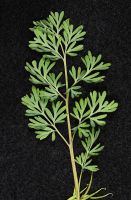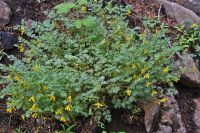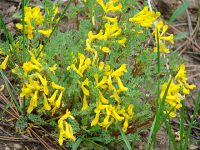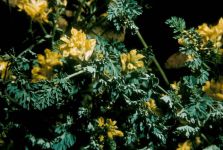Distribution: Occurring chiefly east of the Cascades crest in Washington; Alaska to California, east to the Great Plains, Great Lakes region and northeastern North America.
Habitat: In varied habitats, from moist to dry and well-drained soil.
Flowers: May-August
Origin: Native
Growth Duration: Annual, Biennial
Conservation Status: Not of concern
Pollination: Bumblebees, bees
Glaucous annual or biennial, the spreading to sprawling, freely-branching stems up to 5 dm. long.
Leaves alternate, bipinnate to quadripinnate, considerably exceeding the flowers, the ultimate segments linear, 0.5-2 mm. broad.
Inflorescence of several-flowered, short-pedunculate, bracteate racemes; sepals 2, yellowish-white, 1-3 mm. long, rough-margined; petals 4, yellow, of 2 dissimilar pairs, 12-18 mm. long, the upper petal with a spur 3-6 mm. long, rounded at the tip, about equal to the pedicel; stamens 6, united into 2 groups alternate with the inner petals; style 1, slender, well-developed; stigma 2-lobed.
Capsule 20-25 mm. long and 2-2.5 mm. thick, curved, pendant.
Publication: Enum. Pl. 2: 740. 1809.
-
ssp. aurea – golden corydalis, scrambled eggs
 Occurring chiefly east of the Cascades crest in Washington; Alaska to California, east to the Great Plains, Great Lakes region and northeastern North America.
Occurring chiefly east of the Cascades crest in Washington; Alaska to California, east to the Great Plains, Great Lakes region and northeastern North America.
PNW Herbaria: Specimen records of Corydalis aurea in the Consortium of Pacific Northwest Herbaria database
WA Flora Checklist: Corydalis aurea checklist entry
OregonFlora: Corydalis aurea information
E-Flora BC: Corydalis aurea atlas page
CalPhotos: Corydalis aurea photos

